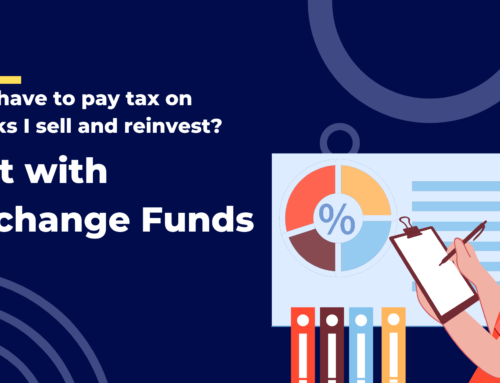Unless you make a living writing a financial frugality blog, it is rare that someone truly enjoys the process of budgeting. When asked to think about budgeting most of us get unpleasant flashbacks of how we have failed in the past. I myself have struggled for years to figure out how to really engage myself in consistent and good financial habits in my day to day life. Unlike many, I have daily inspiration from my clients. What I have found to be true from my experience is that the wealthiest clients are not those that had the largest payouts but those that had the best habits. Through my journey to financial habits self-discovery, I may have finally found something that truly works for me called the Good Decisions Fund.
I decided to gamify my own path to good financial habits. For me, a Good Decisions Fund takes the awful experience of tracking and budgeting and turns it into a game of instant gratification and self-satisfaction. I believe that rewarding yourself now is probably the best chance that you stand to shed those bad financial habits and pick up some good ones along the way. If you feel you can do better with your financial decisions or you are trying to get your loved ones engaged with their finances, then read on.
Now vs Then and Push vs Pull
It is very hard for us to envision ourselves older, grey, and retired. A theory in behavioral economics called time discounting bias states that as the reward becomes more distant in time it loses its value. It is the twin brother of lack of self-control. The same thing that prevents someone from dropping cigarettes and any other unhealthy behavior is the same reason why you can’t force yourself to save. To look for solutions researchers have been finding novel ways to reduce this bias. A study was done in a joint effort with Stanford, London School of Economics, and Northwestern University researchers to show that if we could just see a virtual representation of ourselves at an older age it increased our willingness to save. But understanding that there is a future us is not always enough to stay consistent with our good habits.
Most budgeting techniques tend to be focused on hard discipline and it simply feels like punishment. This is a direct result of how we perceive and how we are taught budgeting. Budgeting is the process of having less now, resisting your urges, and simply punishing you today for the benefit of you tomorrow. Most budgeting techniques approach saving money for tomorrow through negative motivation. You set out to budget by tracking and restricting your purchasing urges and what do you get in return? A feeling of self-loathing when you ultimately fail. This negative feedback can result in a short burst of motivation, but it is rarely a long-lasting effect.
A better approach may be exactly the opposite. A study published by the Harvard Business Review in 2012 exemplifies the power of positive reinforcement in hospital sanitation standards. The study showed that when cautionary signs of the dangers of not washing your hands were posted across the hospital only about 10% of all medical staff sanitized their hands before and after entering a patient’s room. As soon as the hospital installed an electronic display board that resonated a positive message when hospital employees washed their hands, such as “Good Job”, the rate of medical staff sanitizing their hands spiked to 90%!
If we were to take an opposite approach on budgeting that focuses on the now and on positive reinforcement, then maybe we can find a way to build meaningful and sustainable financial habits.
Laying the Foundation for Good Decisions
So how do we put the Good Decisions Fund into practice? You will need a couple of accounts in order to make this a reality.
- First, you need a checking account that receives your automatic pay deposits. For this to work correctly it must be a checking account and not a savings account. Savings account have a regulatory restriction that prevents you from transferring funds out frequently.
- You need to open a brand new savings account at an online bank. I would encourage you to open a new account at a different financial institution than the one you receive your direct deposit for a few reasons. First, for you to feel the impact of your good decisions you want a clean slate so you can really keep score. Second, in order to resist any urges to go and blow your Good Decisions Fund you want a bank separated from your debit card, atm card, checks, and a physical branch that you can walk in to and take the money out of. Finally, chances are that an online bank is going to give you the best savings rate.
- Once your new savings account is opened you want to establish an Electronic Funds Connection (EFT) from your checking account to you’re a savings account. You will establish this connection at the bank where you opened your new account. Most firms make this an easy process and it should only take a couple of days for this connection to be functioning. By opening the account at the new bank you will go through the process of “pulling” the money from your checking account. This will encourage you to check in on your progress and will reinforce your good decision.
Congratulations! Now you have all the pieces set up and you are ready to start your journey to good financial habits.
Playing the Game
On your day to day, month to month, and annual basis you will be faced with tough financial decisions. Some are obvious and others are hidden under the guise of habit. The goal of the Good Decisions Fund game is to see how many savings opportunities you can create in order to transfer more money and get it saved. This is important: you will transfer the amount of money equal to the difference between the “Bad Decision” and the “Good Decision”. The intended result is to become more aware of the choices you make and become more engaged in your financial life. To get you started I will give you examples of day to day, month to month, and annual decisions that can contribute to your Good Decisions Fund.
Day to Day
Day to day good decisions include things such as choosing to take public transportation or walking to work instead of using Lyft/Uber, choosing to cook at home rather than eating out, choosing a generic brand of cleaning product, and shopping for clothes that have discounts. The list goes on and on. Each time you choose the financially intelligent alternative you will take the difference in dollar terms between the two decisions and contribute it to your new savings account from your checking account. As an example, if you would take a Lyft to work and it costs you $17 and instead you take the bus which costs you $3 you would transfer $14 to your investment account. Another example would be cooking at home and bringing lunch to work. Instead of spending $12 a day on lunch if you could buy groceries for lunch for a total of $40 for all 5 days then you can transfer a total of $20 into your Good Decisions Fund.
Month to Month
Month to month choices will include any subscriptions that you may not be actively using or any services that you can downgrade or replace for more cost-effective options. There are several apps out there that allow you to see all your monthly subscriptions. Decide if any of them can be cut out. If you manage to cut out or replace any of these subscription services, you can now create an automatic monthly deposit to your Good Decisions fund. I recently canceled my gym membership at 24-Hour Fitness that was costing me about $39 a month and an additional annual charge of $50 and replaced it with a Costco two-year deal for a total of $430. On a monthly basis for the next two years this will be a monthly savings of $25 or a two years savings of $606. In this example, I would create an automatic monthly deposit of $25 a month to my Good Decisions fund.
Year to Year
Year to year decisions can include things like refinancing your mortgage or student debt, it could be things like finding a more affordable apartment for rent, taking a cheaper vacation, buying a cheaper car, etc. Essentially any big financial decision will fall under this category. With the practice of engaging in good financial habits on a daily and monthly basis, you will become more in tune with your finances and start seeing large opportunities to make good decisions.
Diving into the Gold Vault
Unlike Scrooge McDuck, you will not have a golden vault to dive in to but quickly you will see two things. Your Good Decisions Fund will begin to accumulate, and you will have more money at the end of your paycheck in your checking account. As you begin to accumulate your Good Decisions Fund you will have a choice to make. When it comes to accumulating your wealth, here is the rule of thumb hierarchy you should follow:
- If you don’t have 3 months of emergency savings saved up, then save up the equivalent amount in your Good Decisions Fund.
- If you have 3 months of emergency saved up and have double-digit interest debt e.g. student, credit card, medical, auto debt, etc. then on a quarterly basis use your saved up Good Decisions Fund cash and pay a little extra.
- If you have got those covered then consider putting money away into an IRA if you are eligible and get a great tax shelter benefit.
- If you have all the above-taken care of then it’s time to move on to the world of taxable investments.
So, there you have it. This is the entirety of the Good Decisions Fund process. The Good Decisions fund is there to help you build better financial habits, become more attuned to your spending decisions, and to help you build your wealth. The Good Decisions fund is meant to help those that have struggled with traditional budgeting techniques by introducing instant feedback and positive reinforcement.






